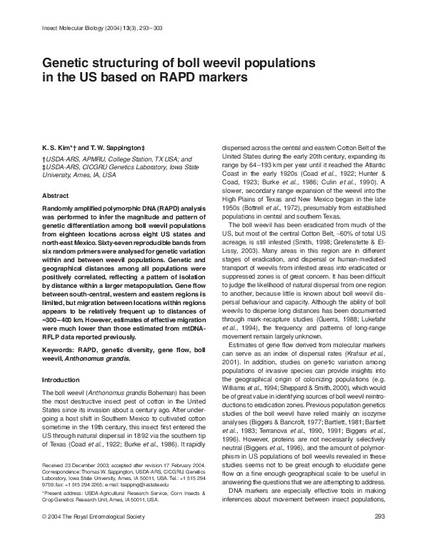
Randomly amplified polymorphic DNA (RAPD) analysis was performed to infer the magnitude and pattern of genetic differentiation among boll weevil populations from eighteen locations across eight US states and north-east Mexico. Sixty-seven reproducible bands from six random primers were analysed for genetic variation within and between weevil populations. Genetic and geographical distances among all populations were positively correlated, reflecting a pattern of isolation by distance within a larger metapopulation. Gene flow between south-central, western and eastern regions is limited, but migration between locations within regions appears to be relatively frequent up to distances of ∼300–400 km. However, estimates of effective migration were much lower than those estimated from mtDNA-RFLP data reported previously.
Available at: http://works.bepress.com/thomas_sappington/80/

This article is from Insect Molecular Biology 13 (2004): 293, doi:10.1111/j.0962-1075.2004.00487.x.